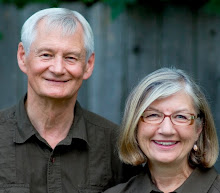Now that our travels are over for awhile, we're back to the everyday stuff, including the piles of laundry that awaited us. Since washing clothes is a bit different in Baotou, we thought we'd highlight this domestic task. We start by wheeling the washing machine, a new model that is popular here, into the bathroom.
We start by wheeling the washing machine, a new model that is popular here, into the bathroom.
 Fill the wash tub on the left with with water from the shower head, add soap, and set the timer; then transfer contents to the right tub to spin, refill the wash tub for the rinse cycle, and repeat.
Fill the wash tub on the left with with water from the shower head, add soap, and set the timer; then transfer contents to the right tub to spin, refill the wash tub for the rinse cycle, and repeat.  The little machine can become quite active during the spin cycle, so Daniel stands at the ready. He's head laundry person.
The little machine can become quite active during the spin cycle, so Daniel stands at the ready. He's head laundry person.
 Hanging sheets is his specialty
Hanging sheets is his specialty

 We start by wheeling the washing machine, a new model that is popular here, into the bathroom.
We start by wheeling the washing machine, a new model that is popular here, into the bathroom. Fill the wash tub on the left with with water from the shower head, add soap, and set the timer; then transfer contents to the right tub to spin, refill the wash tub for the rinse cycle, and repeat.
Fill the wash tub on the left with with water from the shower head, add soap, and set the timer; then transfer contents to the right tub to spin, refill the wash tub for the rinse cycle, and repeat.  The little machine can become quite active during the spin cycle, so Daniel stands at the ready. He's head laundry person.
The little machine can become quite active during the spin cycle, so Daniel stands at the ready. He's head laundry person. Hanging sheets is his specialty
Hanging sheets is his specialty
while Diane assists with the lower items. It works rather well and by next day everything is dry. We haven't seen any clothes driers here, and most folks either hang them in their apartment as we do, or have a pole and hang them out the window. Some of our friends insist on ironing, but we've passed on that one.





































